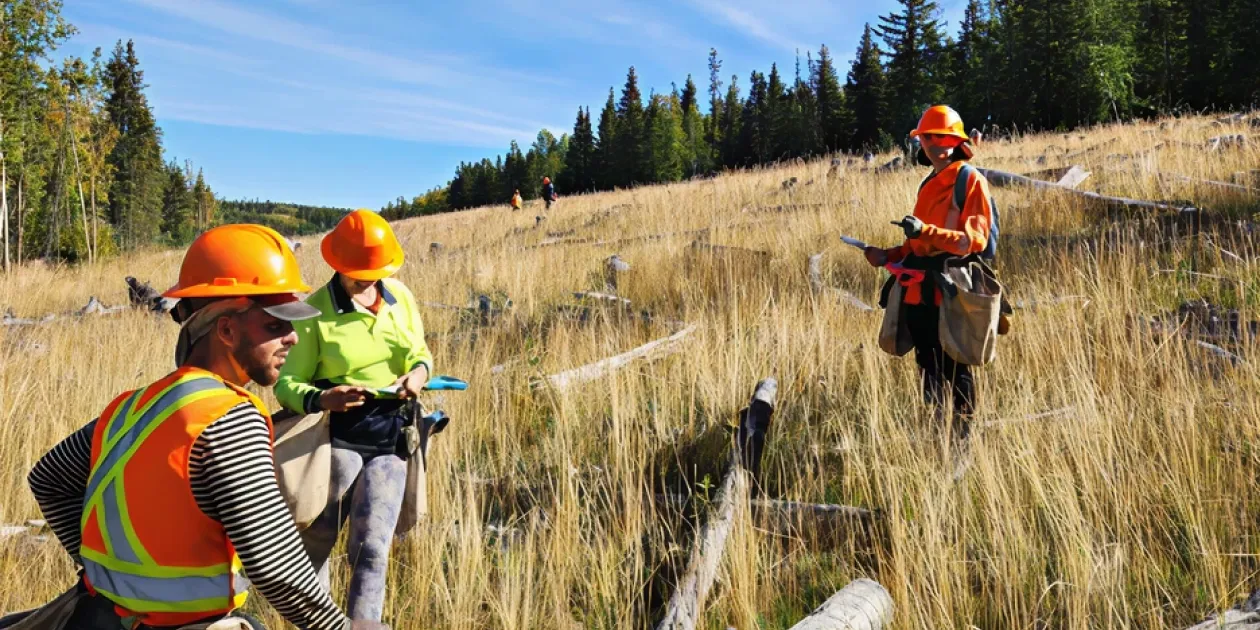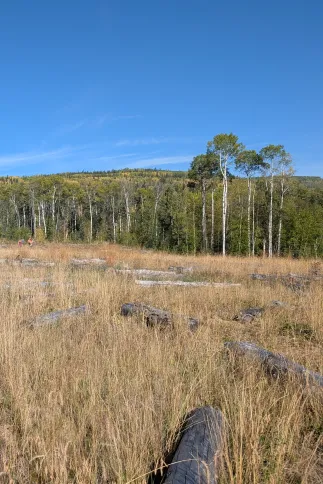Restoring Forests and Biodiversity Along Pipeline Corridors in Partnership with First Nations
In partnership with First Nations communities, Brinkman is restoring ecosystem function along major pipeline infrastructure in Northeast BC, traditional territory of the Saulteau First Nation. This work integrates reforestation into large-scale construction projects, emphasizing biodiversity, safety, and collaboration.

Project Details
Location: Peace Country, Northeast BC
Client / Partners: TransCanada Pipelines, Saulteau First Nation, Aski Reclamation
Project Type: Ecosystem restoration on major infrastructure projects
Scale: Approximately 100 km of pipeline corridor restored
Project Overview
Brinkman Reforestation was contracted to complete ecosystem restoration on a section of Trans Canada’s Coastal Gas Link natural gas pipeline spanning 670 km from Dawson Creek to Kitimat. Our scope covers approximately 100 km, where we restored land disturbed by pipeline construction and associated infrastructure such as pipe yards, staging areas, and access routes. This work requires close partnership with Aski Reclamation and coordination within a complex infrastructure environment that includes multiple contractors and high safety standards.



Impact at a Glance
- 100 hectares of areas restored along the first section of 100 km of pipeline corridor restored
- Native species planted to reintroduced for biodiversity: spruce, lodgepole pine, diverse mix of native shrubs and plants such as lowbush cranberry, beaked willow, honeysuckle, dogwood, saskatoon berry, common bear berry.
- Partnership: Saulteau First Nation owned Aski Reclamation
- Safety & Integration: operations embedded in large-scale construction with helicopters, subcontractors, and strict safety compliance
Ecological Restoration and Infrastructure Integration
This project focuses on replanting areas affected by pipeline construction and associated infrastructure, with an emphasis on restoring biodiversity through conifer and native plant species. Restoration strategies are carefully tailored to balance ecological resilience with the requirements of infrastructure integration. Delivery is carried out in close collaboration with First Nations and subcontractors, ensuring that ecological and cultural priorities are fully reflected in the process.
Complex Planning and Safety Beyond Traditional Forestry
The project requires a high level of planning, coordination and adaptability that sets Brinkman Reforestation apart from traditional tree planting companies. Crews work under strict infrastructure construction-site safety protocols, including orientations and auditing. Logistics involve helicopter access, integration with subcontracted services (fallers, medics, safety specialists), and collaborating with multiple layers of involvement including TransCanada Pipelines, engineering consultants, First Nations partners and helicopter suppliers.
Outcomes
This project is one of many that exemplifies where Brinkman excels at the intersection of ecosystem restoration and major infrastructure development. By combining technical expertise in planting with the logistical demands of large-scale projects, we deliver restoration that is ecologically diverse, aligned with community partnerships, and compliant with industry-leading safety standards.
